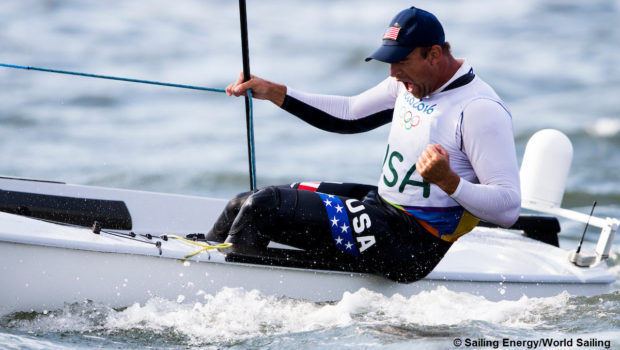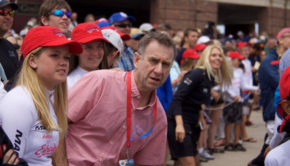Turning the Tide Takes Time
Published on August 31st, 2016
by Craig Leweck, Scuttlebutt
After the US Sailing Team got shut out of the Olympic medal count in 2012, and gained just one medal at the 2016 Games, questions continue about why the once mighty sailing nation still does not dominate. If you missed my Sailing World column on the subject, let me offer how turning a tide that began several decades ago takes time.
The heyday of the US Olympic sailing occurred before youth sailing got structured with club-type boats and age-based sailing. Previously, young people tended to sail whatever they could get their hands on, but the shift in US went toward participation rather than organic development.
This shift in programming had significant success in keeping sailors active through their teen years, but it deterred the kind of exploration that previously occurred. It also separated young sailors from adults, missing out on the kind of competition and mentoring which can lead toward improvement.
As the best US sailors aged out of prams, they moved to the institutional-type doublehanded boats while the international kids moved toward more technical classes. This hastened elite youth development, particularly when it continues through high school and college sailing.
While the Laser and Radial fleets are strong in the US, what is encouraging now is the growth of the I-420 and 29er fleets. If kids sail international boats in the US, and then become successful in these same boats on the international stage, then they are laying a smart foundation for an Olympic campaign. Sailing hard boats in foreign environments takes time to master.
People criticize that the Olympic road is making the choice against going to college, but I see a lot of international sailors who didn’t make that choice. In the US, the choice is rather the type of sailing you do: Olympic style or School style.
People comment about the cost of Olympic campaigns, but I argue that a lot of money is spent during the teen years in competition that isn’t sufficiently contributing toward Olympic success. If an Olympic campaign begins after college, without the needed skills, there will be a lot of money spent on the basics. The key is to be more ready before the campaign begins.
However, the US will never make real podium progress unless a two quad mindset occurs. That means starting earlier. Not many make it to the Games in their first quad, and if they do, excelling is rare unless they’ve had significant success on a similar stage. The Games are a different event. It is not that the racing is harder. In fact, the racing is arguably easier than a class world championship, as the fleet is smaller with less depth. It is all the other aspects of the Games that make it hard.
Competing for your country, in an event occurring only every fourth year, is hard. There are more rules and restrictions. There is a lot of media. Some people can handle the distractions while others need to experience them. I witnessed many eventual medalists move casually within the venue, socializing easily without strain. But I saw others, who fell short of their goals, not handling the situation as well. Some people might not be wired to ever deal with it. You can’t perform well if you are affected by the environment.
Bottom line, this isn’t a quick fix. In 2012, USA qualified for only 3 of 9 Medal Races, with no chance of medaling. In 2016, they were in 6 of 10 Medal Races, with chances in two events, and came away with a medal. That’s progress, but the real measure may not come until the 2024 Games. For now, it is about instilling the love of the game, encouraging young people to realize their dreams and passionately pursue them.









 We’ll keep your information safe.
We’ll keep your information safe.